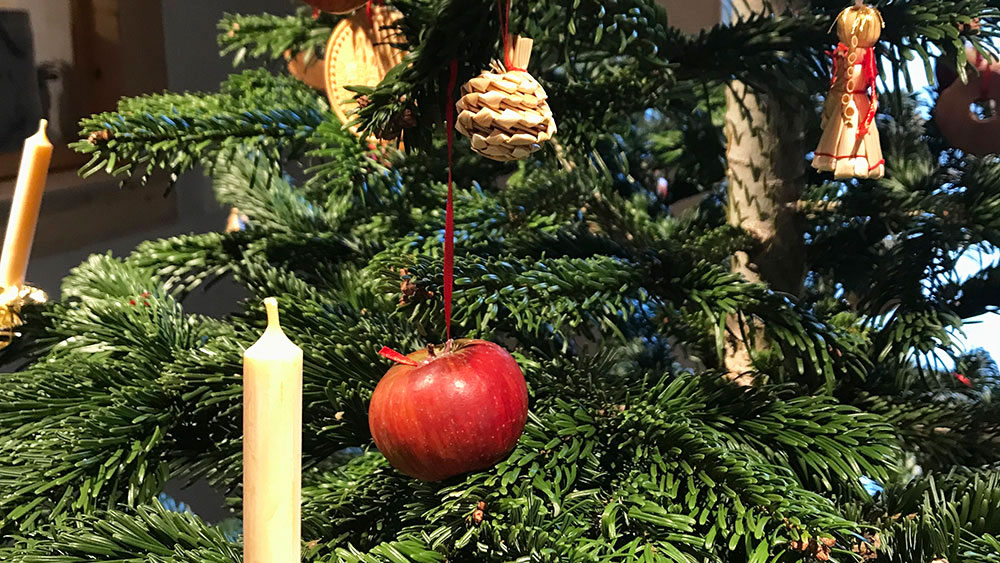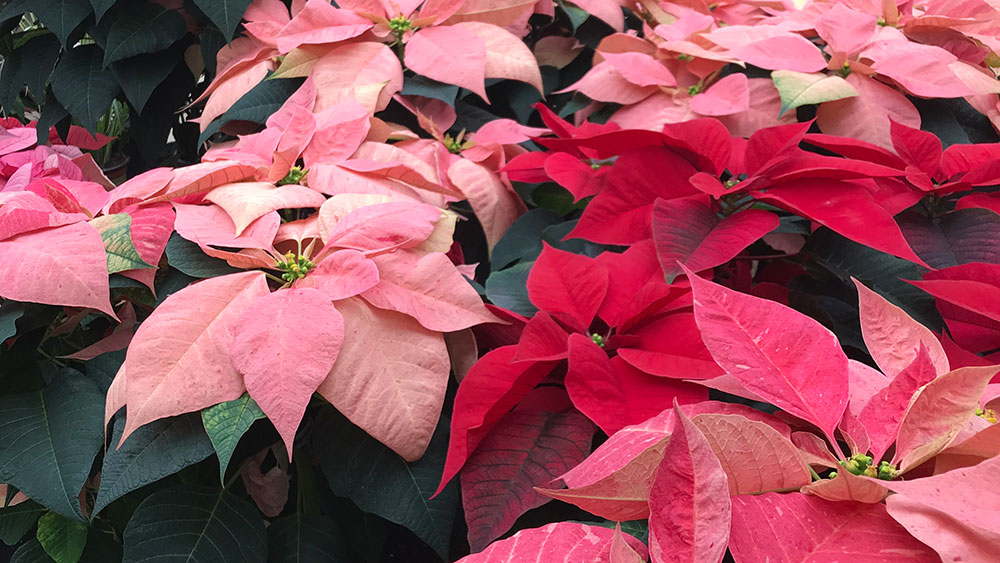O Christmas Tree, O Christmas Tree
Peter Enz, a popular German-language song goes “O Tannenbaum, o Tannenbaum / wie grün sind deine Blätter” – how come it mentions leaves (“Blätter”), when clearly fir trees have needles?
Technically, the lyrics got it right, since the leaves of deciduous plants and coniferous trees are both referred to as leaves. Needles may have a different shape, but they have the same function. But needles are better at retaining water and dry out less quickly.
Which kind of fir tree is best suited as a Christmas tree?
In our parts, I think European silver firs are your best option, since they shed their needles less quickly than other firs. Generally, silver firs and Nordmann firs will keep the longest, and they have a nice even growth right up to the crown. Blue spruces also keep longer than the traditional Norway spruces. However, the latter make more sense ecologically, because they require less care.
What should you look out for when buying a Christmas tree?
If you want a sustainable Christmas tree, you’re best option is to get a local tree, grown without fertilizer or pesticides. Ideally, if you’re out choosing a Christmas tree with a forester or gardener, you can ask them to cut it so that it fits neatly into your Christmas tree stand.
You should also think about whether it makes sense to get a two-meter fir if you’re only going to use it for one evening, or if you should instead rent a smaller tree that you can take home in a pot and then return after Christmas.
Ecologically speaking, does renting a potted Christmas tree make more sense than cutting down a fir?
To be honest, I’m not entirely sure about the carbon footprint here – both options have their pros and cons. Potted plants have to be watered and fertilized all through the summer, for example, whereas plantation trees often grow on soil that is not suitable for agricultural use. There are even fir tree cultures where a special breed of sheep graze that don’t eat Christmas trees, so the meadow requires little care and you don’t need any pesticides.
Do you have any advice on how to keep our Christmas trees looking fresh?
I recommend getting your tree as close to Christmas as possible. If you’ve bought a pre-cut tree, you should keep it outside or in a cool place for as long as possible, and then trim its trunk before you take it inside. Trees that are cut long in advance produce resin to cope with the stress, which closes the tree’s pores. The trunk should be cut into a wedge shape to allow its surface to absorb as much water as possible. You should also water your Christmas tree on a daily basis, and keep in mind that it will last longer in cooler room temperatures.
Another symbol for Christmas and Advent is the “Weihnachtsstern”, or poinsettia, which during the festive period invades our public buildings, schools, offices and homes. Why is it so popular?
Its colors are the same symbolic colors of the Advent and Christmas period – red and green. The most striking feature of poinsettias aren’t their flowers (cyathia), which are very small and inconspicuous, but their bright-red leaves (bracts). It’s as if they’re telling us: Christmas is coming!
What does the plant look like in the wild?
In tropical forests, poinsettias are evergreen shrubs with a wooden stem that can grow up to five meters high. Its large showy leaves, which together form a star-shaped pattern, resemble those of the datura.
My dream was once to grow the largest poinsettia in Switzerland in UZH’s Botanical Garden, which would have attracted many visitors in the run-up to Christmas.
Did your dream come true?
No, unfortunately the experiment failed – probably due to lack of attention and patience as well as the less than ideal climate. Poinsettias are very difficult to grow.
How so?
For one thing, it doesn’t tolerate cold temperatures and drafts very well. For another, poinsettias are what horticulturists call short-day plants. This means that they produce flowers after an induction phase of about six weeks, during which they’re exposed to no more than eight hours of daylight. After this time, the top leaves turn red, which is in turn meant to attract birds for pollination.
In its natural habitat, poinsettias flower in the spring. In order for the plants to produce their distinctive red bracts in time for the festive period, gardeners have to use phases of bright light or complete darkness to fool them into thinking it's actually winter before it flowers. And getting the timing right is very tricky.

